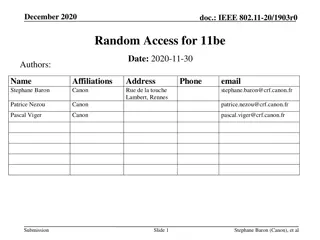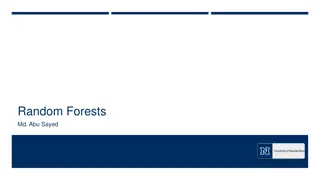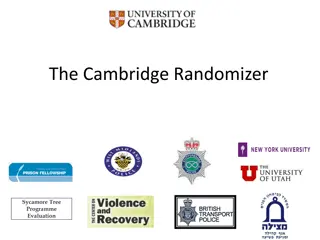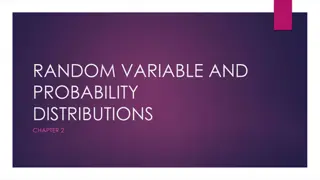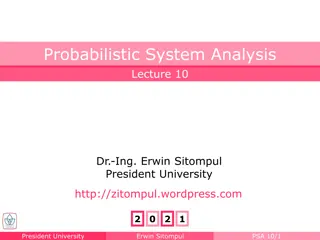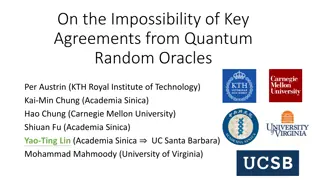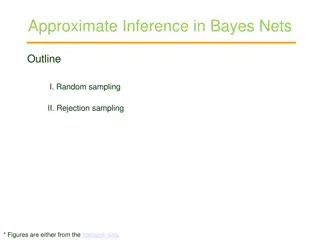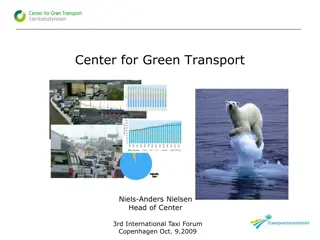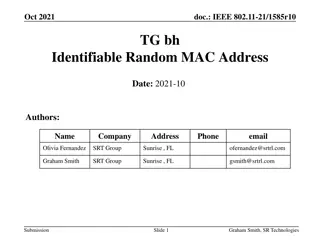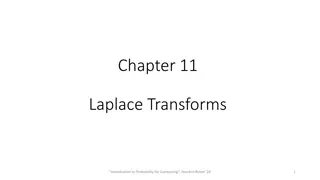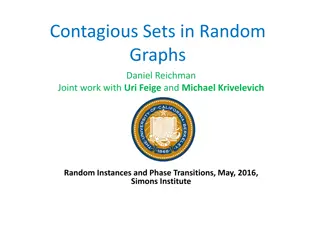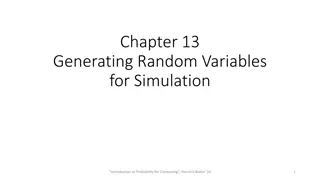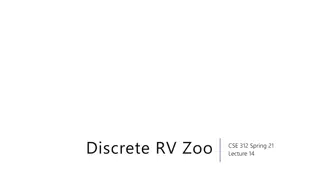
Forward-Backward Single-Source Shortest Paths Algorithms
Explore efficient algorithms for single-source shortest paths, including forward-backward approaches, all-pairs shortest paths in weighted graphs, and the endpoint independent model. Various methods such as Dijkstra's algorithm, Spira's lazy version, and analysis techniques are discussed.
Download Presentation

Please find below an Image/Link to download the presentation.
The content on the website is provided AS IS for your information and personal use only. It may not be sold, licensed, or shared on other websites without obtaining consent from the author. If you encounter any issues during the download, it is possible that the publisher has removed the file from their server.
You are allowed to download the files provided on this website for personal or commercial use, subject to the condition that they are used lawfully. All files are the property of their respective owners.
The content on the website is provided AS IS for your information and personal use only. It may not be sold, licensed, or shared on other websites without obtaining consent from the author.
E N D
Presentation Transcript
A Forward-Backward Single-Source Shortest Paths Algorithm Single-Source Shortest Paths in O(n) time David Wilson Microsoft Research Uri Zwick Tel Aviv Univ. DIKU March 14, 2014
All-Pairs Shortest Paths in randomly weighted complete directed graphs Expected running times (some with high probability) n2 log2n n2 lognlog*n Spira (1973) Bloniarz (1983) Moffat-Takaoka (1987) Mehlhorn-Priebe (1997) n2 logn Demetrescu-Italiano (2004) Peres-Sotnikov- Sudakov-Z (2010) n2 First three results hold in the endpoint independent model
Single-Source Shortest Paths in randomly weighted complete directed graphs with sorted adjacency lists Using only out-going adjacency lists Spira (1973) Bloniarz (1983) Moffat-Takaoka (1987) Mehlhorn-Priebe (1997) in-coming adjacency lists O(nlog2n) O(nlognlog*n) Using both out-going and O(nlogn) (nlogn) Mehlhorn-Priebe (1997) Wilson-Z (2013) O(n)
Endpoint independent model [Spira (1973)] For each vertex v use an arbitrary process that generates n 1 edge weights Randomly permute the n 1 edge weights and assign them to the out-going edges of v
Dijkstras algorithm Priority-queue holds vertices When a vertex is settled , relax all its out-going edges
Spiras algorithm [Spira (1973)] Lazy version of Dijkstra s algorithm Uses sorted out-going adjacency lists Edges are examined one at a time current edge
Spiras algorithm [Spira (1973)] Priority-queue holds current edges After extracting an edge, examine the next out-going edge Fewer edges examined More extractions from priority queue
Analysis of Spiras algorithm in the endpoint independent model Suppose that k vertices were found Each edge extracted from PQ has prob. > (n k)/n of leading to a new vertex Sub-linear algorithm Can it be further improved?
Verification of Shortest Paths Trees Is this a SPT?
Verification of Shortest Paths Trees Is this a SPT?
Could in-coming adjacency lists help?
Distances in a complete graph with independent EXP(1) edge weights [Davis-Prieditis (1993)] [Janson (1999)]
Distances in a complete graph with independent EXP(1) edge weights [Davis-Prieditis (1993)] [Janson (1999)]
Distances in a complete graph with independent EXP(1) edge weights [Janson (1999)]
Out-pertinent edges M median distance
In-pertinent edges M median distance
Forward-backward verification Check only pertinent edges! !
Number of pertinent edges Expected number of pertinent edges is (n) Probability that number of pertinent edges is more than (n) is exponentially small
Number of pertinent edges Condition on a SPT and distances
Number of out-pertinent edges Comparison with a Poisson process
Forward-backward SSSP algorithm Goal: Run Spira s algorithm on the subgraph composed of pertinent edges Run Spira s algorithm until median distance M is found Out-pertinent edges are easy to identify How do we identify the in-pertinent edges? Backward scans used to identify in-pertinent edges When an in-pertinent edge is found, a request is issued for its forward scan
Adjacency lists out-pertinent in-pertinent Out[u] v in-pertinent Req[u] v in-pertinent In[v] u
( (u,v) is an in-pertinent edge ) Append (u,v) to Req[u] If u has no current edge, the request is urgent, and (u,v) is immediately inserted into P
Two-level Bucket-based priority queues If a bucket contains k items when it becomes active, split it into k sub-buckets Store the items in each sub-bucket in a binary heap Probability of more than (n) time is
Open problems More edge weight distributions? (We already have some extensions) n+o(m) for arbitrary graphs with random edge weights? End-point independent model? Could the new forward-backward algorithm be useful in practical applications?

